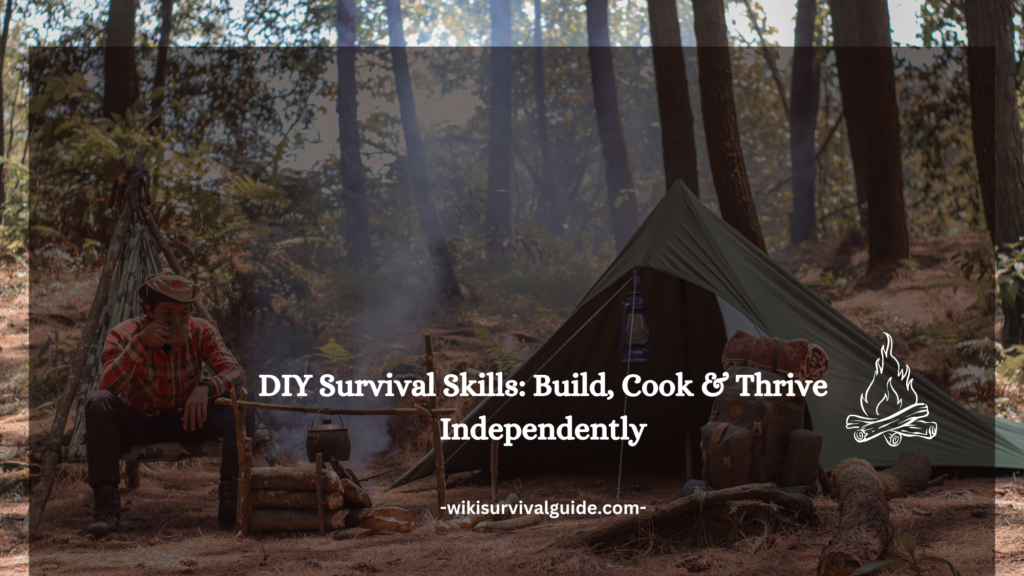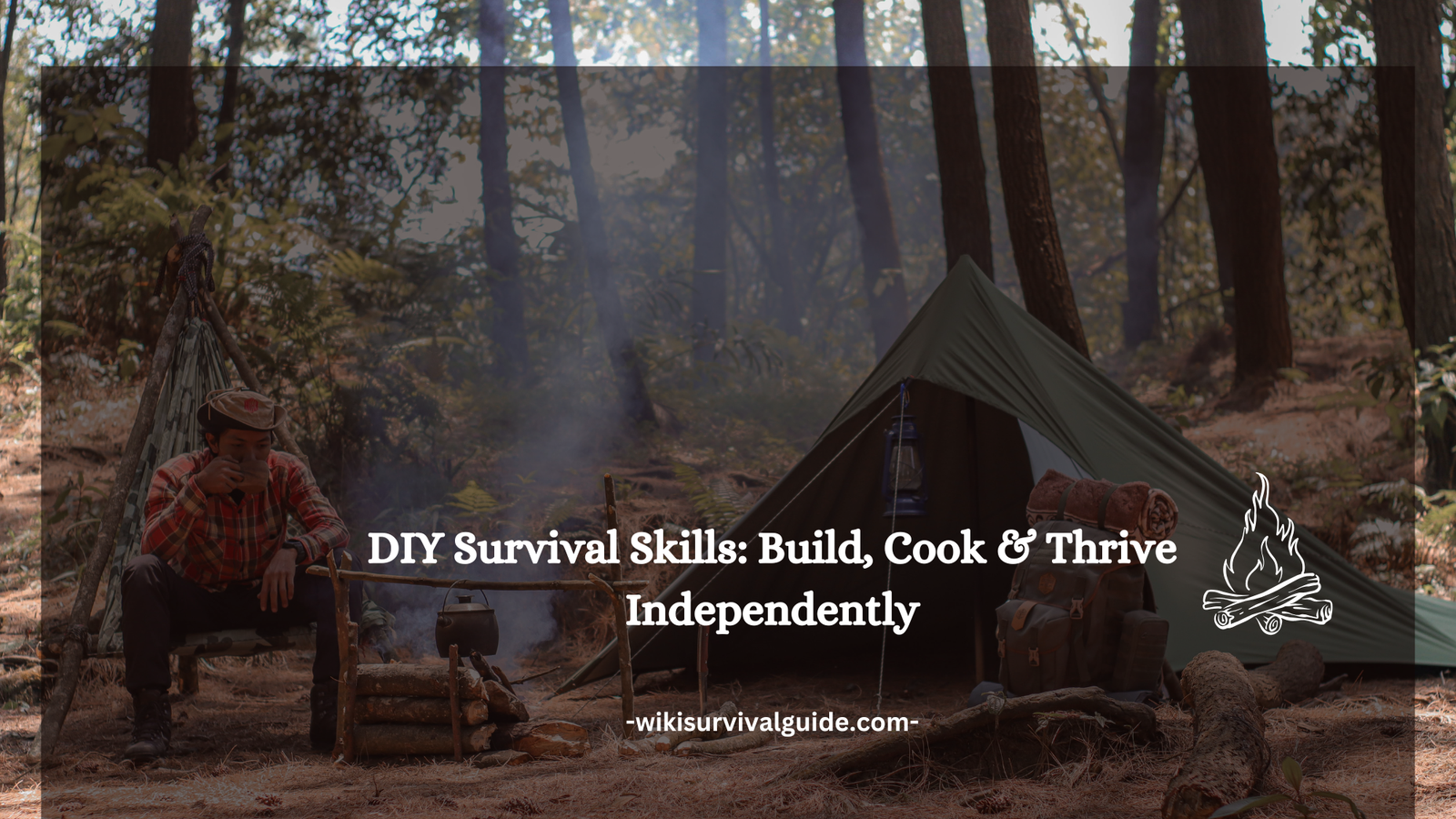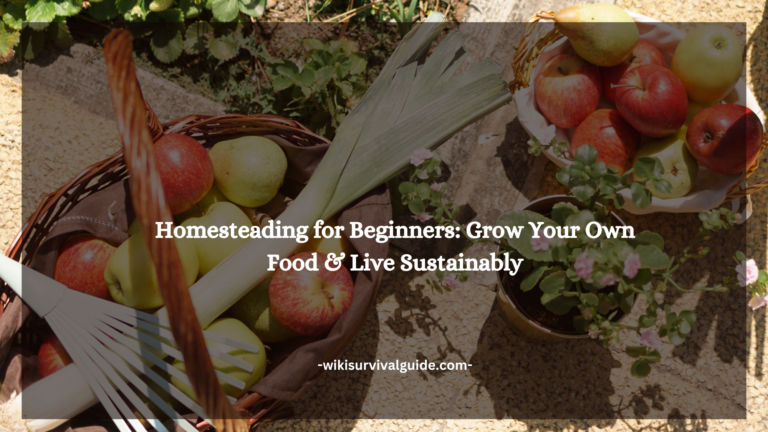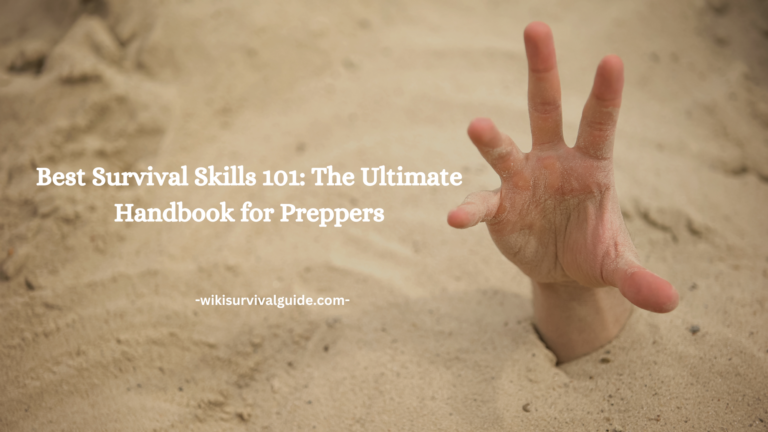Mastering DIY survival skills is an essential step toward self-sufficiency, whether you’re preparing for an emergency, embracing off-grid living, or simply enjoying the challenge of thriving independently. These skills empower you to build shelters, cook with limited resources, purify water, and navigate the wilderness with confidence. This guide explores the most vital survival techniques, including how to construct reliable shelters, cook nutritious meals with minimal supplies, secure clean water, and develop essential bushcraft skills. Whether you’re a beginner or an experienced survivalist, this comprehensive resource will help you build, cook, and thrive in any situation.

Building Essential Survival Shelters
A proper shelter is crucial for protection against the elements, especially in extreme weather conditions. Understanding how to construct different types of shelters ensures you stay warm, dry, and safe in any environment.
Choosing the Right Location
Selecting the right location for a shelter can mean the difference between safety and disaster. Look for:
- Elevated ground to avoid flooding
- Natural windbreaks, such as rocks or dense foliage
- Proximity to resources like water and firewood
- Safe distances from potential hazards like dead trees or animal trails
Types of Survival Shelters
Lean-To Shelter
A simple structure made with branches and leaves, a lean-to provides adequate protection in mild conditions. It consists of a slanted roof supported by a horizontal beam.
A-Frame Shelter
This shelter provides better coverage and insulation than a lean-to. It uses two leaning walls of branches, covered with leaves or tarps, for extra warmth.
Debris Hut
Ideal for cold weather, a debris hut uses sticks and thick layers of leaves or grass to trap body heat inside.
Tarp Shelter
A lightweight and versatile shelter option, a tarp can be rigged in multiple ways using rope and natural anchors.
Underground Shelter
For extreme survival situations, digging an underground shelter provides insulation from harsh weather. These are often used in desert or arctic conditions.
Cooking in Survival Situations
Survival cooking is about using available resources efficiently to prepare safe and nutritious meals.
Making Fire Without Matches
Knowing how to start a fire without modern tools is an essential survival skill. Methods include:
- Ferrocerium Rod (Ferro Rod) – Produces sparks when scraped with steel.
- Flint and Steel – A traditional fire-starting method using sparks from flint rock.
- Fire Bow Drill – Uses friction to create an ember by rotating a stick in a wooden groove.
- Solar Magnification – Using a magnifying glass or water-filled clear plastic to focus sunlight.
Best Foods for Survival Cooking
Wild Edibles
- Berries (blackberries, blueberries, raspberries)
- Nuts (acorns, walnuts, chestnuts)
- Edible greens (dandelion, plantain, wild lettuce)
Hunting and Trapping
- Small game like rabbits and squirrels
- Fishing in nearby lakes or rivers
- Setting snares for larger prey
Cooking Techniques Without Modern Tools
- Rock Boiling – Heating rocks in a fire and dropping them into water to cook food.
- Underground Pit Cooking – A method where food is buried with hot coals for slow cooking.
- Spit Roasting – Cooking meat over an open flame using sticks.
- Clay Baking – Covering meat or fish in clay and cooking it directly in fire embers.
Finding and Purifying Water
Access to clean drinking water is one of the most critical survival needs.
Natural Water Sources
- Rivers and Streams – Flowing water is usually cleaner than stagnant water.
- Rainwater Collection – Using tarps or leaves to funnel rain into a container.
- Morning Dew – Wiping grass or leaves with cloth and squeezing the water out.
Water Purification Methods
Boiling Water
The most effective way to kill bacteria and parasites. Water should be boiled for at least 3 minutes.
Solar Disinfection (SODIS)
Using clear plastic bottles left in direct sunlight for 6 hours to kill microorganisms.
Charcoal Filtration
Passing water through layers of charcoal, sand, and gravel to remove debris.
Chemical Treatment
Adding iodine or purification tablets to water to kill harmful bacteria.
Navigation and Orientation
Survival often requires finding your way without GPS or maps.
Navigating Using Natural Signs
- Sun Navigation – The sun rises in the east and sets in the west.
- Star Navigation – The North Star provides a reliable guide for direction.
- Tree Moss Growth – Moss tends to grow on the north-facing side of trees.
Crafting a DIY Compass
- Magnetize a small metal needle by rubbing it against silk or hair.
- Place it on a leaf floating in water; the needle will point north.
Self-Defense and Security
When in survival mode, knowing how to defend yourself is crucial.
Building a Perimeter Alarm
Using rocks, sticks, or cans tied to a tripwire to alert you of intruders.
Improvised Weapons
- Spears – Sharpened sticks used for hunting and protection.
- Slingshots – A simple but effective ranged weapon.
- Blunt Weapons – Clubs and heavy sticks for close combat.
Long-Term Survival Strategies
For extended survival situations, planning ahead ensures sustainability.
Growing Your Own Food
Creating a small, sustainable food source by planting fast-growing vegetables such as:
- Potatoes
- Carrots
- Beans
- Spinach
Building a Reliable Shelter for the Long Term
Using durable materials like mud bricks, logs, and stones to create a semi-permanent dwelling.
Stockpiling Essentials
Keeping an emergency stock of:
- Non-perishable foods
- Water containers
- Medical supplies
- Tools for fire and construction
Conclusion
Mastering DIY survival skills is the key to building resilience and independence. From shelter-building and fire-starting to hunting, water purification, and self-defense, these essential skills equip you to thrive in any environment. Whether you’re preparing for an emergency or embracing an off-grid lifestyle, learning these techniques ensures that you can survive and thrive independently.
By incorporating these skills into your daily life, you can develop true self-sufficiency and gain confidence in your ability to handle any situation.
FAQs
1. What are the most important DIY survival skills to learn?
The most crucial DIY survival skills include fire-making, water purification, shelter building, food preservation, first aid, navigation, and self-defense. Mastering these skills ensures survival in emergencies and off-grid living.
2. How can I start learning survival skills at home?
Begin by practicing basic survival techniques such as fire-starting, water filtration, and cooking with limited resources. Reading survival guides, watching tutorials, and trying small DIY projects like making a solar still or homemade stove can help.
3. What are the best food preservation methods for survival?
Dehydration, canning, pickling, fermentation, and smoking are effective ways to preserve food. These methods help store food long-term without refrigeration, making them essential for self-sufficiency.
4. How do I build a simple survival shelter?
A simple survival shelter can be made using natural materials like branches, leaves, and logs. The most common types are lean-tos, A-frame shelters, and debris huts, which provide insulation and protection from the elements.
5. What tools should I have in a survival kit?
A well-equipped survival kit should include a multi-tool, knife, fire starter, water filter, flashlight, emergency blanket, rope, compass, and first-aid supplies. These tools help with food gathering, shelter building, and emergency preparedness.




Leave a Comment